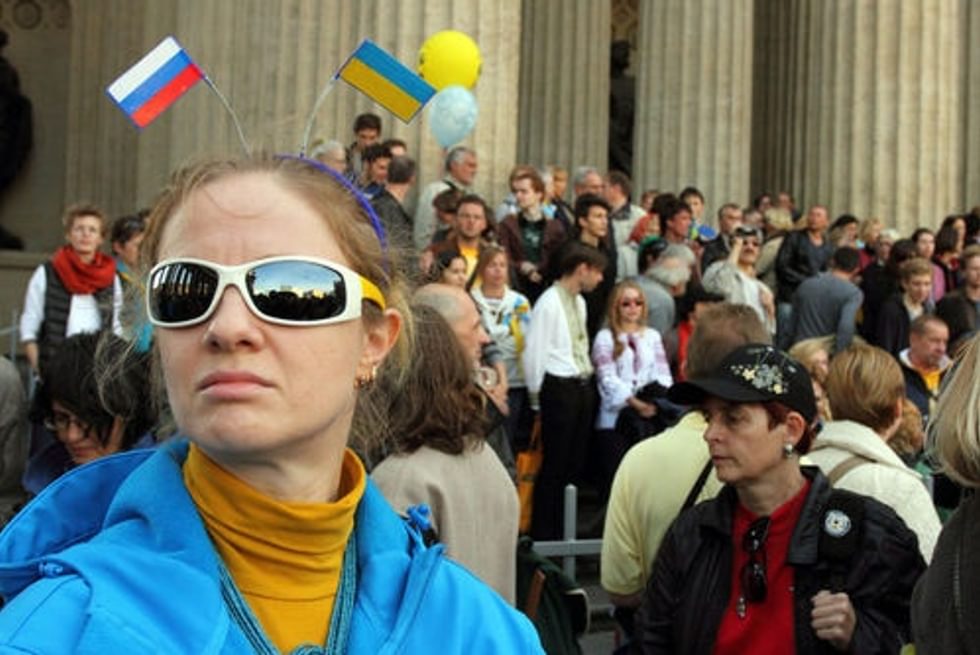Bare Power
From the Series: Ukraine and Russia: The Agency of War
From the Series: Ukraine and Russia: The Agency of War


Anthropologically, one of the most innovative features of Putin’s campaign in Ukraine has been the selective use of un-identified military organizations (UMO). Employed in the Crimean campaign in 2014, these regiments had no uniform, marks of distinction, or national identity. Everyone knew that they were Russian-armed, Russian-speaking, and Russian-financed teams of Russian soldiers. However, their origin could not be “proven;” such was the hope of those in the Kremlin who sent these soldiers to the Crimea. And indeed, this unrecognizable character of UMOs defined the success of the Crimean campaign. Like UFOs, these UMOs could cross boundaries and violate laws without retribution. But unlike UFOs that operate in an obscure space between reality and fiction, nobody could doubt the existence of UMOers in Crimea or their success in occupying the land.

For some reason, this success was not repeated in the next campaign in Donbass. There the Russian or Cossack troops identified themselves ethnically, ideologically, and even commercially; they established political units and formed a line of command with military leaders who declared their allegiance to the Kremlin; and they did not, and probably could not, conceal their supply lines, which crossed the Russia-Ukrainian border. As the events on the ground quickly demonstrated, this clarity of self-identification co-occurred with the failure of these military and political units. As the Donetsk and Lugansk “republics” have turned into minor sections of historical books, the success of the UMOs in Crimea remains the only success of twenty-first-century Russian military art on Ukrainian territory. Precisely because of the enigmatic character of this unusual maneuver, we need to understand its nature, conditions, and restrictions.
Seeking a philosophical means of representing the horror of the Nazi and Soviet camps, the Italian philosopher Giorgio Agamben developed the concept of bare life, defined as “life that may be killed but not sacrificed.”1 Indeed, only life that has value may be sacrificed. By analogy, I define bare power as a force that can kill but not be identified. These two concepts, bare life and bare power, are viciously related. In the context of a political religion that the Kremlin is trying to establish, “sacrifices” are those who are killed for the sake of the sovereign, so that he strengthens his power over the Kremlin, Russia, and the world. In contrast, “bare lives” can be killed but not sacrificed because they belong to those pathetic ones whose ends do not add to sovereign glory and power. Every year, millions of these bare lives find their premature ends in Russia; the sovereign has made everything to construe these deaths as politically neutral, i.e. unrelated to his self-definitions. According to the Russian sovereign, his glory and power depends on the expansion of the territory and the income of the state, and not on the prosperity or longevity of the population.
It is exactly this intentional irrelevance of the people to the sovereign purposes that made the Crimean affair of the Kremlin so anonymous and, simultaneously, so effective. Well-trained, well-paid, well-equipped Russian soldiers, many of them members of the elite troops of army intelligence, were sent to Crimea without any legal protection. Captured, they would be treated not as prisoners of war but as unlawful combatants, whom international treaties (such as the Third and Fourth Geneva conventions) deprive of any rights and privileges in comparison to the civil population at war. In case of victory, these soldiers manifested bare force; in case of defeat they would turn into bare life. The traditionally Russian way of defining imperial endeavors by land rather than by people directed and justified this astounding innovation.
However, this successful maneuver of the “polite little men,” as they became known in the ironic Russian press, could not be repeated outside of Crimea. In military terms, the Crimean campaign occurred in unique conditions that can hardly be reproduced elsewhere. Large military bases of the Black Sea Fleet had been widely dispersed over the whole peninsula well before the hostilities; they provided ready supplies. Carefully planned by the Russian side, it was a sudden, unexpected attack that took Ukraine and the international community by surprise. The Ukrainian units were outnumbered and helpless; the Ukrainian government had not defined, by then, the military and legal terms of its “Anti-Terrorist Operation.” To conclude this quick analysis, I submit that this “bare power” type of operation would work only in the military situation of overwhelming superiority, in which almost any other type of operation would work as well.
1. Giorgio Agamben, Homo Sacer: Sovereign Power and Bare Life (Stanford, Calif.: Stanford University Press, 1995), 83; Giorgio Agamben, Remnants of Auschwitz: The Witness and the Archive, translated by Daniel Heller-Roazen (New York: Zone Books, 1999). For criticisms of Agamben’s analysis of the Muselmann, bare life, and witnessing, see Dominick LaCapra, “Approaching Limit Events: Siting Agamben,” in Giorgio Agamben: Sovereignty and Life, edited by Matthew Calarco and Steven DeCaroli (Stanford, Calif.: Stanford University Press, 2007), 126–62.